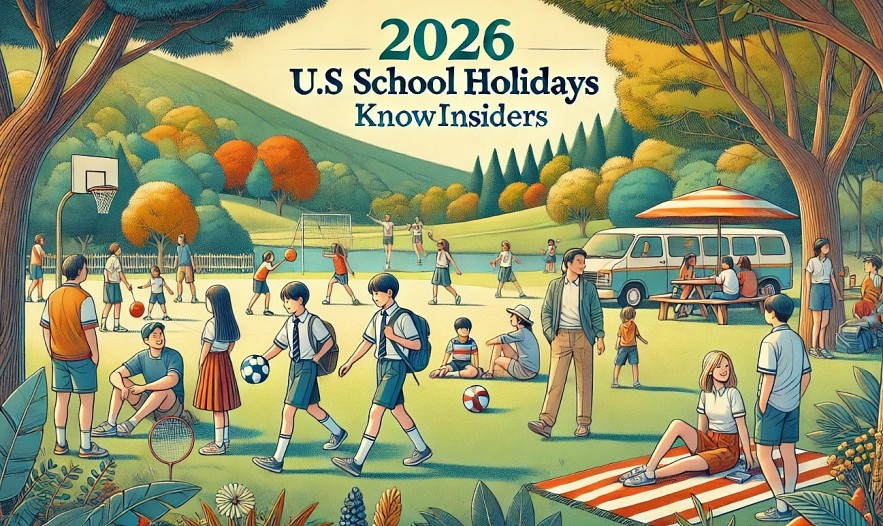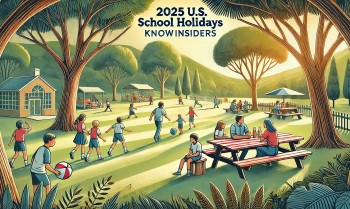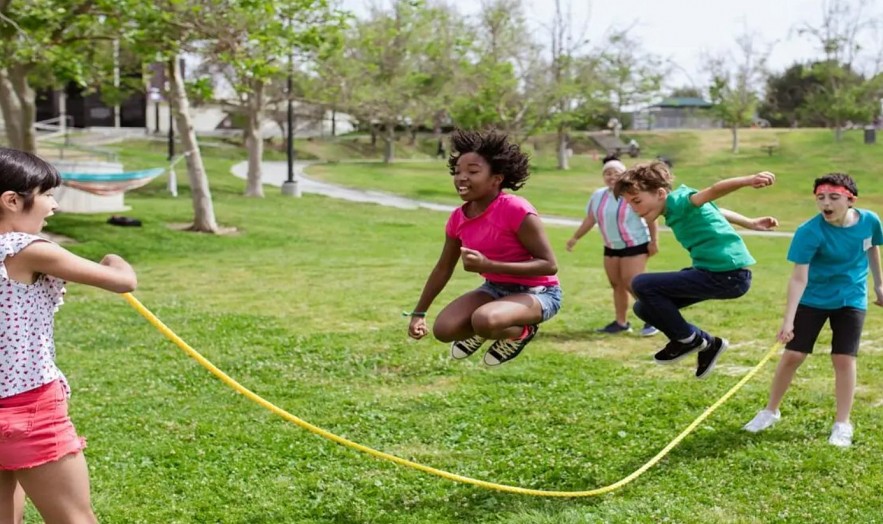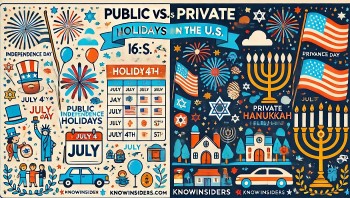U.S. School Holidays in 2026: Full List of Breaks, and Key Dates
 |
| 2026 U.S School Holidays |
Overview of U.S. School Holidays
School holidays in the United States serve multiple purposes. They provide students with much-needed rest, allow families to travel and reconnect, and offer opportunities to celebrate and reflect on cultural, religious, and historical traditions. The foundation of the school calendar is built around 11 federally recognized holidays, complemented by seasonal breaks and additional state-specific observances.
Key Influences on School Calendars
- Federal Holidays: Established by Congress, these 11 holidays are recognized nationwide and often observed by schools.
- Local Autonomy: State and local education boards have significant freedom in crafting school calendars, which can result in variations in holiday observance.
- Private Schools: These institutions operate independently, often aligning their schedules with the cultural or religious needs of their communities.
- Seasonal Breaks: Winter, spring, and summer breaks provide extended periods of rest and are central to the academic year.
The 2026 school year highlights the rich tapestry of American traditions, offering students and families a chance to balance education with celebration and reflection.
 U.S. School Holidays in 2025: Full List of Breaks, and Key Dates U.S. School Holidays in 2025: Full List of Breaks, and Key Dates |
U.S. Federal Holidays and School Breaks in 2026
 |
| 2026 U.S School Breaks |
The 11 federally recognized holidays form the cornerstone of the U.S. school calendar. These holidays commemorate key historical events and figures while offering time off for students and staff.
1. New Year’s Day – Thursday, January 1
The first day of the year is a global celebration marked by fireworks, parties, and resolutions. For schools, New Year’s Day falls during the winter break, ensuring students and staff are free to enjoy festivities with their families.
2. Martin Luther King Jr. Day – Monday, January 19
This holiday honors Dr. Martin Luther King Jr.’s contributions to the civil rights movement. Schools often remain closed, but many districts use the preceding weeks to teach about Dr. King’s advocacy for equality, justice, and nonviolence. Community service events are also popular on this day, reinforcing its message of unity and civic responsibility.
3. Presidents’ Day (Washington’s Birthday) – Monday, February 16
Initially established to honor George Washington, Presidents’ Day now recognizes the contributions of all U.S. presidents. Schools may close, while classroom activities often focus on the nation’s founding principles, presidential history, and leadership.
4. Memorial Day – Monday, May 25
Observed on the last Monday of May, Memorial Day honors fallen military personnel. Schools universally close, and communities host parades, flag ceremonies, and other commemorative events. This holiday also marks the unofficial start of summer.
5. Juneteenth National Independence Day – Friday, June 19
Juneteenth commemorates the end of slavery in the United States, specifically the emancipation of enslaved African Americans in Texas in 1865. While it falls during summer break, schools often integrate lessons on African American history and the significance of freedom before the term ends.
6. Independence Day – Saturday, July 4
As one of the most celebrated holidays in the U.S., Independence Day commemorates the signing of the Declaration of Independence in 1776. Though it occurs during summer break, schools often address its significance in history lessons before closing for summer.
7. Labor Day – Monday, September 7
Labor Day recognizes the contributions of American workers to the nation’s development. This holiday falls early in the academic year, offering students and staff a long weekend. Some districts plan for school orientations or events around this time.
8. Columbus Day/Indigenous Peoples’ Day – Monday, October 12
This dual holiday highlights different perspectives on history. While Columbus Day celebrates the explorer’s landing in the Americas, Indigenous Peoples’ Day honors the resilience and cultures of Native Americans. Observance varies, with some schools closing and others focusing on educational activities.
9. Veterans Day – Wednesday, November 11
Veterans Day honors those who have served in the U.S. military. Schools may close or host assemblies, parades, and events that teach students about the sacrifices made by service members.
10. Thanksgiving Day – Thursday, November 26
Thanksgiving is a cherished American tradition centered on gratitude and family gatherings. Schools universally close for Thanksgiving and often extend the break to include the following Friday, creating a four-day weekend for families.
11. Christmas Day – Friday, December 25
Christmas, which celebrates the birth of Jesus Christ, is part of the winter holiday season. Schools typically close for 1–2 weeks during this period, accommodating family travel and holiday preparations.
Scheduled Breaks in the 2026 Academic Calendar
 |
| U.S School Breaks in 2026 |
Scheduled school breaks are an integral part of the U.S. academic calendar, offering structured pauses throughout the year for rest, family bonding, and opportunities to explore extracurricular activities. These breaks typically revolve around key seasons and holidays, with their exact timing and length determined by individual school districts or states.
1. Winter Break
- Typical Dates: December 21, 2025 – January 4, 2026 (varies by district)
- Duration: 1–2 weeks
- Details:
- Purpose: Winter break coincides with the holiday season, including Christmas and New Year’s. It gives families time to travel, celebrate religious and cultural traditions, and enjoy leisure activities during the colder months.
- Activities: Families often plan vacations to warmer climates, visit relatives, or engage in seasonal activities like skiing or ice skating. Schools may also encourage students to participate in holiday-themed community events or charitable activities before the break begins.
- Private Schools: Religious-affiliated schools, such as Catholic or Jewish schools, may align their breaks more closely with specific religious observances during this period.
2. Spring Break
- Typical Dates: March 16–20 or April 6–10, 2026 (varies by district)
- Duration: 1 week
- Details:
- Purpose: Spring break provides a mid-semester pause, often aligned with Easter for districts that recognize the holiday. It’s a time for students to recharge before completing the school year.
- Activities: Families take advantage of this break for travel to destinations such as beaches, amusement parks, or national parks. Educational trips and local recreational activities, like museum visits or day camps, are also popular.
- Regional Variations: In some states, spring break aligns with regional festivals, such as cherry blossom celebrations in Washington, D.C., or seasonal events in Florida.
3. Summer Break
- Typical Dates: Late May or Early June – Late August or Early September
- Duration: 10–12 weeks
- Details:
- Purpose: Summer break is the longest school holiday, marking the end of the academic year and allowing students and teachers to rest and reset before the next term.
- Activities: Summer camps, internships, academic enrichment programs, and family vacations dominate this period. Students often use the time to pursue hobbies, participate in community service, or gain work experience.
- Regional Variations: States in the southern U.S. often begin the school year earlier (mid-August), while northern states may start in early September.
4. Fall Break
- Typical Dates: October 12–16, 2026 (if observed)
- Duration: 2–5 days
- Details:
- Purpose: Fall break is less common but is observed by some districts, often coinciding with Columbus Day or Indigenous Peoples’ Day. It offers a short respite for students and staff after the first two months of school.
- Activities: Families may use this time for short trips, visits to local attractions, or attending fall festivals. Some districts hold teacher development sessions during this break.
5. Thanksgiving Break
- Typical Dates: November 25–29, 2026
- Duration: 3–5 days
- Details:
- Purpose: Thanksgiving break provides families with time to prepare for and celebrate the Thanksgiving holiday, which emphasizes gratitude and togetherness.
- Activities: Common traditions include family gatherings, holiday feasts, and community volunteerism, such as serving meals to the less fortunate. Some families also use this break for early holiday shopping or travel.
State-Specific Holidays and Observances in 2026
The diversity of state-specific holidays in the U.S. reflects the nation’s cultural and historical richness. While these holidays aren’t federally mandated, they play a significant role in regional school calendars, leading to closures or special programming.
1. Mardi Gras
- States: Louisiana, Alabama
- Date: Tuesday, February 17, 2026
- Details:
- Significance: Rooted in French Catholic traditions, Mardi Gras, or "Fat Tuesday," is celebrated with parades, music, and cultural events.
- School Impact: Schools in Louisiana, particularly New Orleans, often close for several days to accommodate the celebrations. In Mobile, Alabama, Mardi Gras-related activities are deeply ingrained in local traditions.
- Cultural Insights: Students learn about the religious and historical significance of Mardi Gras in the weeks leading up to the holiday.
2. Cesar Chavez Day
- States: California, Arizona, Colorado
- Date: Monday, March 31, 2026
- Details:
- Significance: This holiday honors Cesar Chavez, a labor leader and civil rights activist who championed the rights of farmworkers.
- School Impact: Schools may close or hold events that educate students about Chavez’s legacy and the broader labor rights movement.
- Educational Focus: Classroom discussions often include topics like social justice, community organizing, and the history of labor movements.
3. Patriot’s Day
- States: Massachusetts, Maine
- Date: Monday, April 20, 2026
- Details:
- Significance: Commemorates the first battles of the American Revolutionary War, specifically the battles of Lexington and Concord.
- School Impact: Schools in Massachusetts and Maine often close, while communities host reenactments, parades, and historical tours.
- Educational Focus: Students learn about the Revolutionary War’s significance through local events and classroom lessons.
4. Pioneer Day
- State: Utah
- Date: Friday, July 24, 2026
- Details:
- Significance: Celebrates the arrival of Mormon pioneers in the Salt Lake Valley in 1847.
- School Impact: Schools are usually on summer break, but the holiday is widely observed through parades, fireworks, and community gatherings.
- Cultural Insights: Pioneer history is integrated into Utah’s curriculum, emphasizing resilience and settlement stories.
5. Native American Day
- States: South Dakota, California
- Date: Friday, September 25, 2026
- Details:
- Significance: Honors the contributions and history of Native American communities.
- School Impact: South Dakota schools typically close, while California integrates Native American history into lessons.
- Cultural Focus: Students explore indigenous traditions, languages, and their historical significance in shaping the nation.
6. Hawaii Statehood Day
- State: Hawaii
- Date: Friday, August 21, 2026
- Details:
- Significance: Celebrates Hawaii’s admission as the 50th state of the United States in 1959.
- School Impact: Schools are on summer break, but the day is marked with cultural festivals and educational programs.
Conclusion
The U.S. academic calendar in 2026 is shaped not only by federal holidays but also by a variety of scheduled breaks and state-specific observances. These holidays reflect the country’s regional diversity and provide students with opportunities to celebrate, rest, and engage in meaningful cultural experiences. Families should always check their local school district’s calendar for precise dates and details to plan effectively.
FAQs About U.S. School Holidays in 2026
Here’s a comprehensive list of frequently asked questions to help you better understand the U.S. school holidays and breaks in 2026:
1. How many federal holidays are observed in the U.S. in 2026, and do all schools close for them?
The U.S. observes 11 federal holidays in 2026:
- New Year’s Day (January 1)
- Martin Luther King Jr. Day (January 19)
- Presidents’ Day (February 16)
- Memorial Day (May 25)
- Juneteenth (June 19)
- Independence Day (July 4)
- Labor Day (September 7)
- Columbus Day/Indigenous Peoples’ Day (October 12)
- Veterans Day (November 11)
- Thanksgiving Day (November 26)
- Christmas Day (December 25)
Do all schools close?
Not necessarily. While most public schools close for these holidays, some schools, especially private or religious institutions, may remain open for specific holidays or adjust their academic calendar based on their focus.
2. Are public and private school calendars the same?
No, public and private school calendars differ in several ways:
- Public schools: Governed by state and local education boards, these calendars align closely with federal and state mandates.
- Private schools: Operate independently, often incorporating additional holidays to reflect religious or cultural traditions (e.g., Yom Kippur, Diwali, or Ramadan).
Private schools may also adjust the length of breaks or holiday observances based on their educational philosophy.
3. What are the longest breaks in the U.S. school calendar?
- Summer Break: 10–12 weeks (late May or early June to late August or early September).
- Winter Break: 1–2 weeks (late December to early January).
- Spring Break: 1 week (March or April).
These breaks allow students and staff extended time for rest, travel, and family activities.
4. Are there additional holidays specific to individual states?
Yes, several states recognize holidays unique to their history or culture, such as:
- Mardi Gras in Louisiana and Alabama (February 17, 2026).
- Cesar Chavez Day in California, Arizona, and Colorado (March 31, 2026).
- Patriot’s Day in Massachusetts and Maine (April 20, 2026).
- Pioneer Day in Utah (July 24, 2026).
- Native American Day in South Dakota and California (September 25, 2026).
These holidays may lead to school closures or special programming in the respective states.
5. Do all schools observe Columbus Day/Indigenous Peoples’ Day?
No. Observance of this holiday varies significantly:
- Some schools close for Columbus Day, especially in states where it remains a recognized holiday.
- Many states now celebrate Indigenous Peoples’ Day instead, with a focus on Native American history and culture.
- Some schools remain open and use the day for educational activities highlighting both perspectives.
6. What is the typical duration of school breaks?
- Winter Break: 1–2 weeks.
- Spring Break: 1 week.
- Summer Break: 10–12 weeks.
- Thanksgiving Break: 3–5 days.
- Fall Break: 2–5 days (if observed).
The exact duration varies by school district and state.
7. How are religious holidays accommodated in U.S. schools?
Public schools generally remain open for religious holidays unless they coincide with a federal or state holiday. However, they may accommodate students and staff who observe specific holidays by granting excused absences. Private schools, particularly religious ones, often align their calendars with key religious observances like:
- Yom Kippur and Rosh Hashanah (Jewish schools).
- Eid al-Fitr and Eid al-Adha (Islamic schools).
- Feast days and Ash Wednesday (Catholic schools).
8. How can families plan vacations around school holidays?
Families can plan vacations by consulting their local school district’s academic calendar, which is typically published well in advance of the school year. Popular travel times include:
- Winter Break: Great for holiday-related travel or skiing trips.
- Spring Break: Ideal for warm-weather destinations or cultural festivals.
- Summer Break: The longest break, offering flexibility for international travel or extended vacations.
Be mindful of peak travel times during Thanksgiving and Christmas to avoid higher costs.
9. Are there any weather-related breaks in the academic calendar?
Yes, in areas prone to severe weather (e.g., snowstorms in the Northeast or hurricanes in the Southeast), schools build "weather days" or "snow days" into their calendars. These days act as a buffer, allowing schools to close during extreme conditions without extending the academic year unnecessarily.
10. Are schools open on Veterans Day?
Veterans Day (November 11) is observed differently across the U.S.:
- Some schools close to honor military veterans.
- Others remain open and use the day for educational programs, such as assemblies, guest speakers, or discussions about veterans’ contributions to the nation.
 Public vs. Private Holidays in the United States: The Differences? Public vs. Private Holidays in the United States: The Differences? US holidays are either public (federal) or private. Public holidays are celebrated nationwide and often result in widespread closures, but private holidays are celebrated by ... |
 Top 12 Most Popular Holidays in India for June Top 12 Most Popular Holidays in India for June India is the place with plenty of festivals all over the year, and beautiful culture. Keep reading the article below for 12 Most Popular Festivals ... |
 Top 25 Most Famous Festivals In Europe 2024 You Should Enjoy Top 25 Most Famous Festivals In Europe 2024 You Should Enjoy We're your entry point to the largest events on the Old Continent, whether you're traveling to Europe for the beer, the cheer, or to see ... |
 Top 10 Major Religious Festivals Worldwide in 2025 Top 10 Major Religious Festivals Worldwide in 2025 Here’s a look at the top 10 major religious festivals in 2025, their origins, significance, customs, and estimated participant numbers. |
 Full List of Festivals in the US for 2025: Music, Food, Art, Film, Street and More Full List of Festivals in the US for 2025: Music, Food, Art, Film, Street and More From coast to coast, the United States is home to a dynamic array of festivals in 2025 that celebrate music, food, art, literature, technology, history, ... |
























